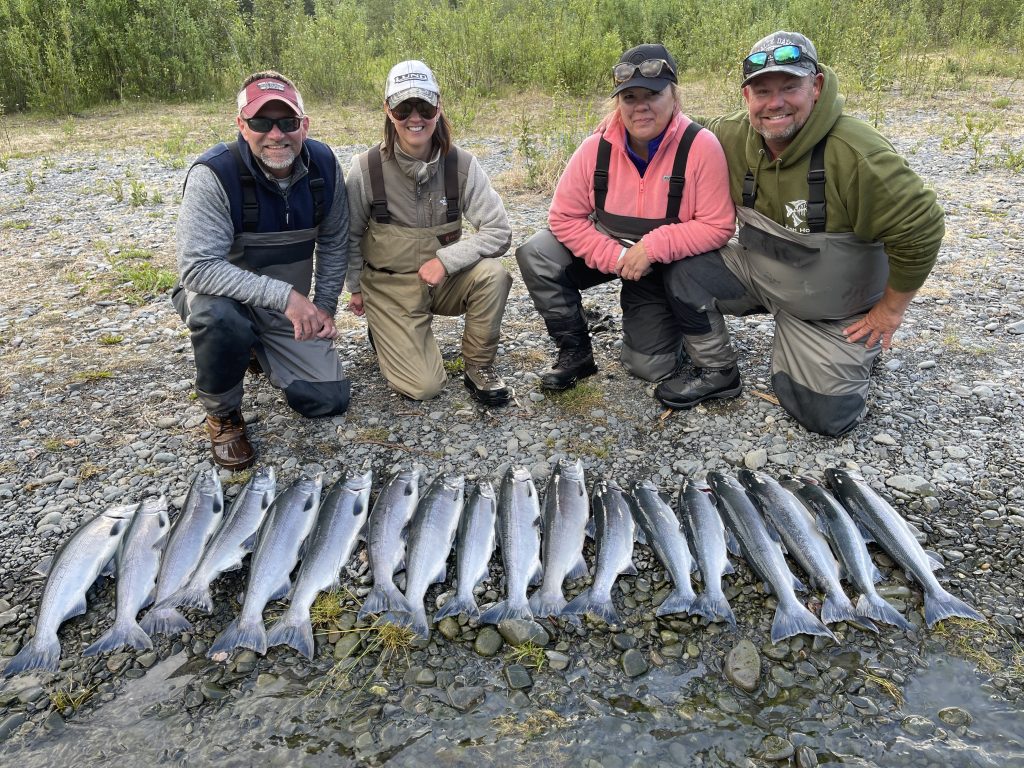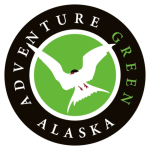The technique we use for sockeye salmon on the Kenai River is called the Sockeye Swing. It takes just a little practice to get good at it.
A question I get a hundred times each summer is, “When I fish for sockeye salmon using the Sockeye Swing on the Kenai River, am I really just snagging fish or are the sockeye biting my fly?” Snagging a fish usually means you are ripping a treble hook through the water and trying to hook a fish anywhere you can. Sockeye fishing – doing the sockeye swing, flipping, or flossing as we call the technique on the Kenai River – is a lot more civilized and specific in its presentation. We are allowed to use one single hook for our presentation and on the Upper Kenai River that hook must have a 3/8 inch gap or smaller.
The Sockeyes, or “Reds” as they are called in Alaska, run up the river in schools along the shoreline until they reach staging areas to rest as they migrate to their spawning grounds. The sockeye salmon like to swim as close to the shoreline as possible so they can stay out of the heavy current. When a salmon runs up the river they take breaths by having water run through their mouths past their gills to pull oxygen out of the water into their bloodstream.
The objective of the Kenai River salmon angler is to present their fly in a manner in which the leader attached to the fly drifts or swings down and through the water column where the sockeye are running and the fly ends up in the salmon’s mouth before the angler swings their rod into the next cast.
When the fly is presented properly and the salmon are running good you end up with a positive connection and have a hook up that results in a landed salmon for the stringer and grill, or a quick photo and release. When you learn to present the fly with precision, to the depth and speed of the water you are fishing, you will have lots of hook-ups and landed fish.
The water speed and depth you fish will dictate the leader length from the weight to the fly and the amount of weight used. The kind of line and pound test you use will also dictate buoyancy of your fly. When the sockeye have seen lots of flies swinging past them they can become leader and line shy which makes a heavier fluorocarbon a good bet. When buoyancy is needed a limper monofilament line doesn’t drop as fast as the fluorocarbon is the best option in a heavier diameter test.
Sockeye or red salmon are pound-for-pound one of the hardest fighting, best eating fish that the Kenai River and Alaska has to offer. The fact that the limits on the Kenai River are usually liberal with a three or six fish bag limit – depending on the time of year and escapement goals met – makes them a great fish for sport or table fare. The best way to learn the sockeye swing quickly is hire a guide and get out on the water as soon as you make it to the Kenai Peninsula on your Alaskan vacation. Don’t hesitate to book a trip with Jason’s Guide Service to learn the ins and out of the sockeye salmon fishery and learn that Sockeye Swing.


